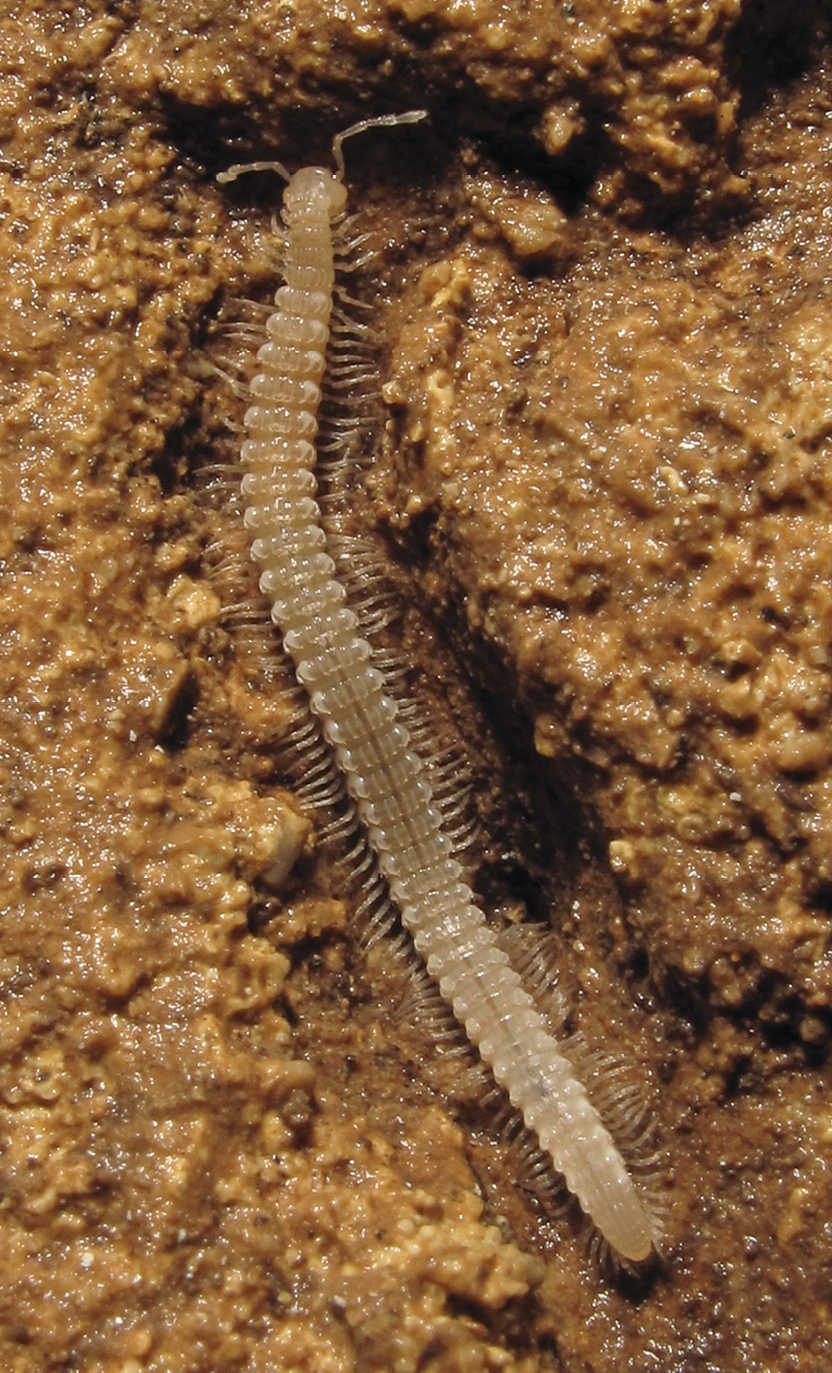 |
| Tetracion millipede from Alabama, USA. (Credit: Alan Cressler) |
The southern Cumberland Plateau in Tennessee and Alabama, USA is known for its high cave density. In addition, it has the highest cave biodiversity of any region in North America. Millipedes of the genusTetracion range across this biodiversity hotspot. These millipedes, which can grow up to 8 cm in length, are common scavengers in cave communities. Like many cave animals, Tetracionmillipedes have reduced pigmentation and non-functional eyes.
The authors used genetic techniques to compare Tetracion populations and species. They found thatTetracion populations were generally isolated from one another. In addition, divergence between Tetracion species was high, suggesting that members of the genus diverged several million years ago.
Journal Reference:
Stephanie Loria, Kirk Zigler, Julian Lewis. Molecular phylogeography of the troglobiotic millipede Tetracion Hoffman, 1956 (Diplopoda, Callipodida, Abacionidae). International Journal of Myriapodology, 2011; 5 (0): 35 DOI:10.3897/ijm.5.1891
Source: Science Daily
